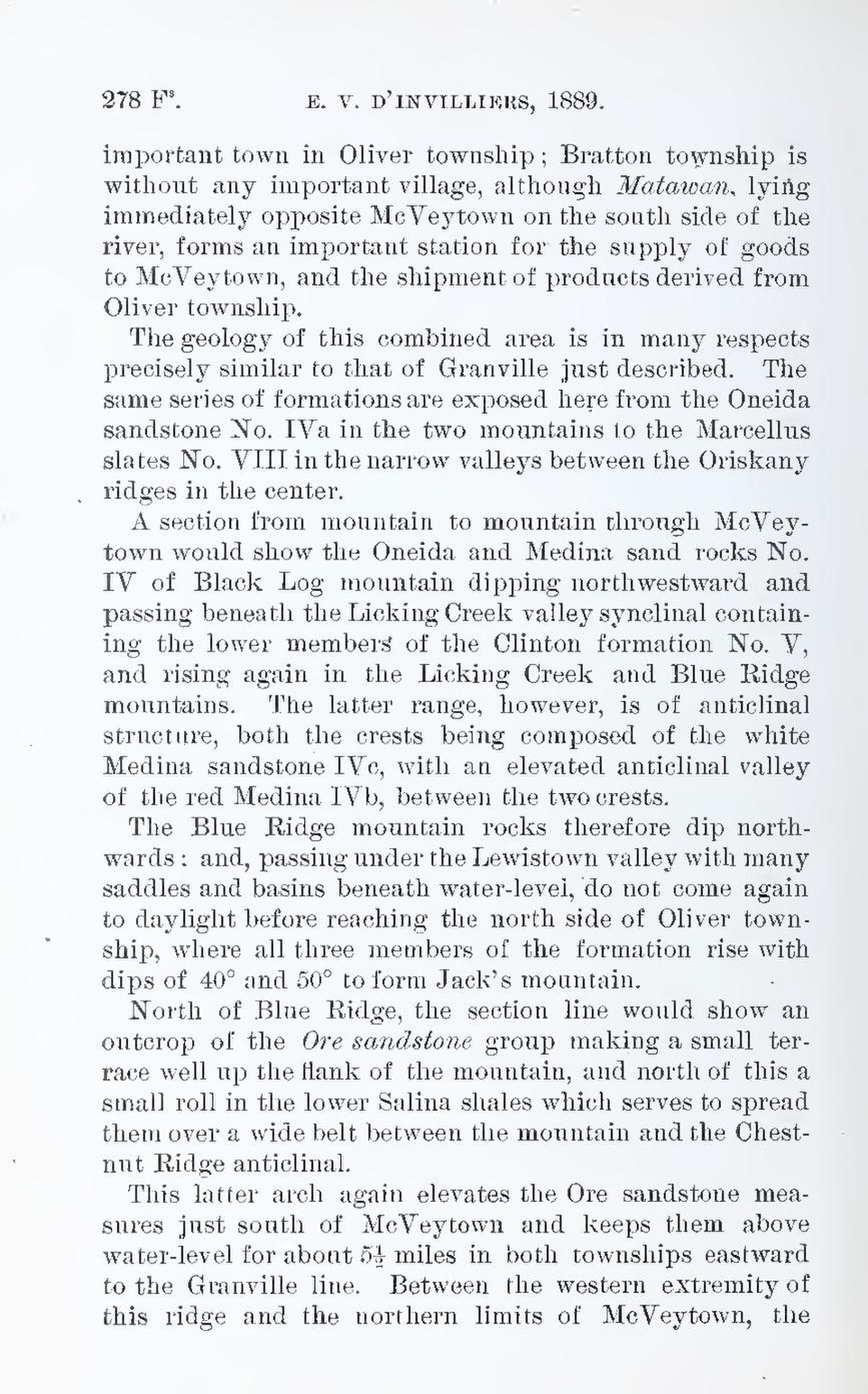important town in Oliver township; Bratton township is without any important village, although Matawan, lying immediately opposite McVeytown on the south side of the river, forms an important station for the supply of goods to McVeytown, and the shipment of products derived from Oliver township.
The geology of this combined area is in many respects precisely similar to that of Granville just described. The same series of formations are exposed here from the Oneida sandstone No. IVa in the two mountains to the Marcellus slates No. VIII in the narrow valleys between the Oriskany ridges in the center.
A section from mountain to mountain through MeVeytown would show the Oneida and Medina sand rocks No. IV of Black Log mountain dipping northwestward and passing beneath the Licking Creek valley synclinal containing the lower members of the Clinton formation No. V, and rising again in the Licking Creek and Blue Ridge mountains. The latter range, however, is of anticlinal structure, both the crests being composed of the white Medina sandstone IVc, with an elevated anticlinal valley of the red Medina IVb, between the two crests.
The Blue Ridge mountain rocks therefore dip northwards: and, passing under the Lewistown valley with many saddles and basins beneath water-level, do not come again to daylight before reaching the north side of Oliver township, where all three members of the formation rise with dips of 40° and 50° to form Jack’s mountain.
North of Blue Ridge, the section line would show an outcrop of the Ore sandstone group making a small terrace well up the flank of the mountain, and north of this a small roll in the lower Salina shales which serves to spread them over a wide belt between the mountain and the Chestnut Ridge anticlinal.
This latter arch again elevates the Ore sandstone measures just south of McVeytown and keeps them above water-level for about 5½ miles in both townships eastward to the Granville line. Between the western extremity of this ridge and the northern limits of McVeytown, the
